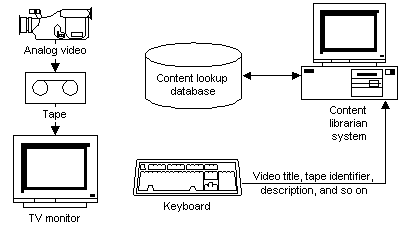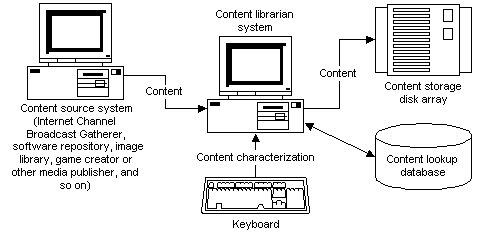
[This is preliminary documentation and subject to change.]
The first step in processing broadcast data is to catalog it. This is true whether the data is analog television, digital video, or any other form of digital data. This task can be accomplished using a database that contains information about what data is available and where to find it.
The diagrams following provide a schematic representation of two possible systems that catalogs content. The first diagram, following, illustrates cataloging and storing digital television or audio content. The content librarian system is a computer that an operator uses to collect the digital content, characterize it with key words and descriptive text, and store the content data and related information.

The following diagram illustrates cataloging and storing analog television content. In this case the content data is not directly available to the content librarian system, so the content lookup database must include identifying information. This information could include the title of the video, a tape ID, or a description.

The following diagram illustrates cataloging and storing other digital content. This system is similar to the digital audio and video system. The difference is that the content data comes from other sources source as web page gatherers or image libraries.
